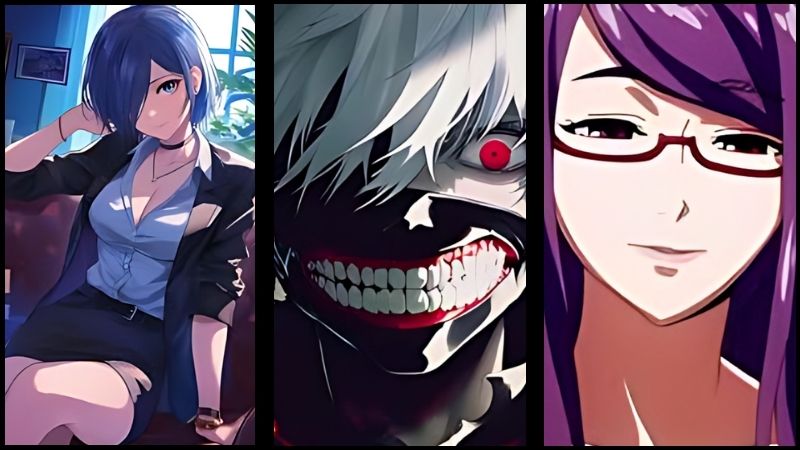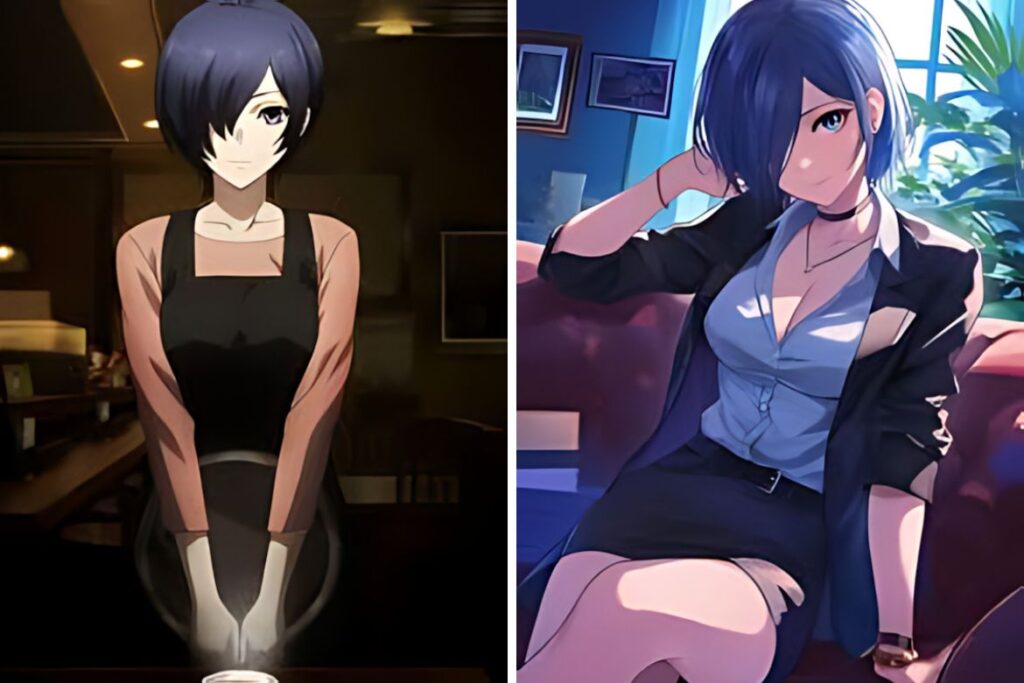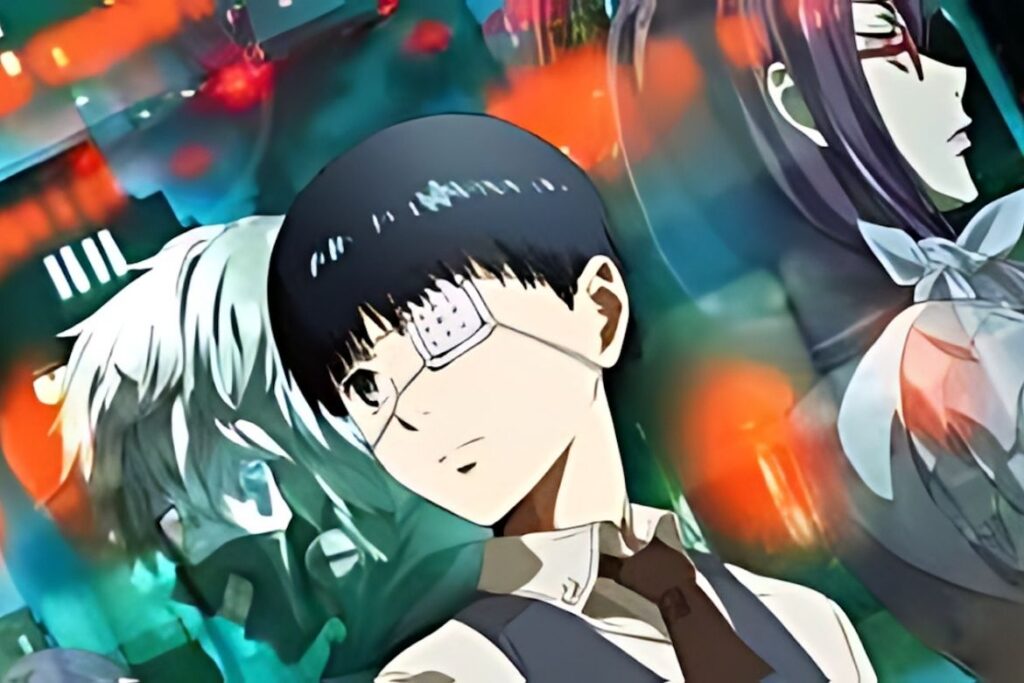Table of Contents
If you’re a fan of dark fantasy and deep, emotional storytelling, you’ve probably heard of Tokyo Ghoul. This series didn’t just give us incredible fights and unforgettable characters it became a cultural phenomenon. Let’s dive into everything you need to know about the manga that started it all, from its creator to the story, the anime adaptation, and why the manga reigns supreme.
1. Who Created Tokyo Ghoul?

- Author & Illustrator: Sui Ishida, the genius behind the series, is known for his dark, intense storytelling and unique art style. His ability to combine raw emotion with brutal action is unmatched, making Tokyo Ghoul such a masterpiece.
- Character Designs: Every character, from Kaneki’s haunting transformation to Eto’s eerie presence, was designed by Ishida himself. His attention to detail makes each character feel alive, with designs that perfectly match their personalities and struggles.
2. Manga Overview

- Volumes: The original Tokyo Ghoul manga has 14 volumes with 143 chapters. Its sequel, Tokyo Ghoul: re, continues the story with another 16 volumes (179 chapters), making 30 volumes in total.
- Serialization: The manga first appeared in Weekly Young Jump on September 8, 2011, and wrapped up in 2014.The sequel Tokyo Ghoul: re ran from 2014 to 2018.
- Sales: This series is a juggernaut, selling over 44 million copies worldwide as of 2023. That’s not just impressive it’s legendary.
3. The Story That Hooked Us All

Tokyo Ghoul starts with Ken Kaneki, a regular college kid who’s a little shy and loves to read. After a date with Rize Kamishiro (who turns out to be a ghoul), he nearly dies in an attack. When Kaneki wakes up, he finds out he’s been turned into a half-ghoul, with her organs transplanted into his body.From there, the story dives deep into Kaneki’s struggle with his new identity. He’s stuck between two worlds: the humans he used to belong to and the ghouls he’s now part of. As he learns more about both sides, we see the brutal realities of survival, the pain of losing oneself, and the hope of finding a purpose in the chaos.
4. Anime Adaptation: The Good and the Bad

Anime Seasons
- Tokyo Ghoul Season 1 (2014) adapted the first few arcs of the manga pretty well, introducing us to Kaneki and the terrifying world of ghouls.
- Tokyo Ghoul A (Season 2, 2015) veered off into its storyline, creating a version of the story that didn’t match the manga.
- Tokyo Ghoul:re (2018–2019) tried to bring the sequel manga to life but crammed too much into too little time.
Earnings
While exact numbers are hard to pin down, the anime and its related merchandise brought in millions of dollars worldwide. It played a huge role in spreading Tokyo Ghoul’s fame beyond Japan.
5. How Much Did Tokyo Ghoul Earn?

Tokyo Ghoul Character
- Manga Sales: With over 44 million copies sold, the manga itself has likely earned over $150–200 million.
- Franchise Revenue: When you add in the anime, merchandise, games, and licensing, Tokyo Ghoul has raked in more than $300 million globally.
- Cultural Impact: This series didn’t just make money—it left a mark on the anime and manga industry, inspiring countless fans and creators.
6. Manga vs Anime: What’s the Difference?

If you’ve only watched the anime, you’re missing out—big time. Here’s how they compare:
Storyline
- Manga: The manga is the full, uncut version of the story, with every arc, twist, and heartbreaking moment intact.
- Anime: The first season is faithful to the manga, but Tokyo Ghoul √A goes completely off-script. The anime’s ending is rushed and leaves a lot of loose ends.
Character Development
- Manga: Characters like Kaneki, Touka, and Arima get the time they deserve. You feel their struggles and growth.
- Anime: The anime cuts a lot of this depth, especially in later seasons. Kaneki’s transformation, for example, feels way more powerful in the manga.
Themes and Symbolism
- Manga: Heavy themes like identity, morality, and survival are explored deeply. The symbolism like Kaneki’s white hair or the use of masks—is rich and meaningful.
- Anime: While some themes make it through, they’re often watered down or lost entirely in the rush to move the story along.
Pacing
- Manga: The pacing is perfect, letting you sink into the story and feel every emotion high and low.
- Anime: The anime rushes through key moments, especially in Tokyo Ghoul: re, which crams too much into too little time.
7. Why the Manga Wins

The Tokyo Ghoul manga is the definitive version of the story. It’s darker, deeper, and more complete, with Sui Ishida’s stunning artwork bringing every moment to life. The anime has its strengths like introducing the series to a wider audience but if you want the full Tokyo Ghoul experience, the manga is where it’s at.
8. Final Thoughts

Tokyo Ghoul isn’t just a story it’s an experience. Whether you’ve been drawn in by the anime or are diving straight into the manga, there’s no denying the impact this series has had. But trust me, if you want to feel every twist, every heartbreak, and every moment of Kaneki’s journey, grab the manga. It’s a wild ride and one you won’t forget.
9. Where to Read Tokyo Ghoul Manga Online

- VIZ Media – Read on their website or app; offers purchases and subscriptions.
- Shonen Jump App – Access via subscription; great for completed series.
- ComiXology – Purchase or read with Kindle Unlimited.
- BookWalker – Buy digital volumes; frequent discounts.
- Amazon Kindle – All volumes are available as eBooks.